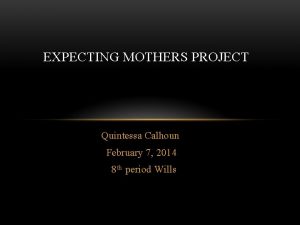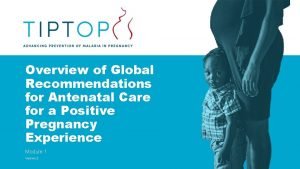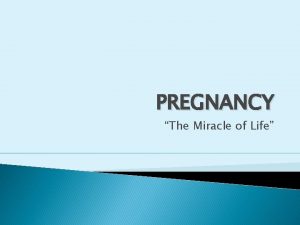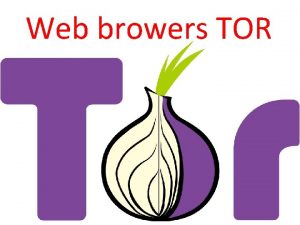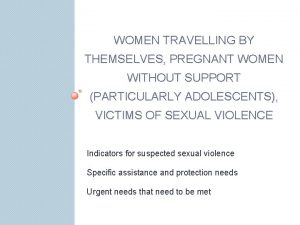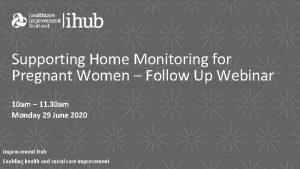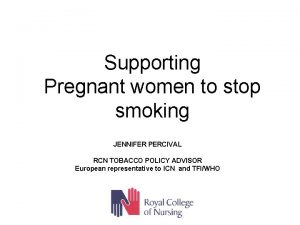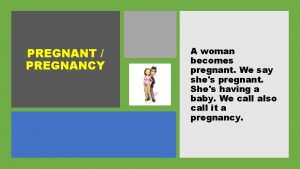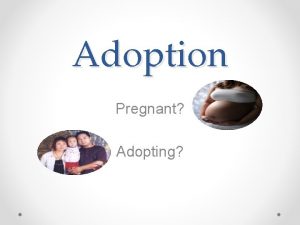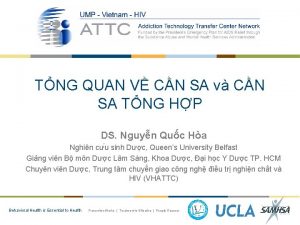AIAN ATTC TOR Case Study Supporting Pregnant Women










- Slides: 10

AI/AN ATTC TOR Case Study: Supporting Pregnant Women with Opioid Use Disorder (OUD) and their Infants Tool for Preparing the Workforce for Work with this Population of Focus

Case Study: Review this slide first and think through your responses. Then review the remaining slides to identify any additional key information for consideration. § Oriya, is 25, 7 -months pregnant and has an 8 -year long opioid use disorder (OUD). § She was just admitted to treatment at the Four Winds Outpatient Treatment program. § As Wren, a new Four Winds Care Manager, began to prepare for her first meeting with Oriya, she wondered what to expect and how she might best help Oriya prepare for her pending delivery and her post partum life in recovery. § If you were the case manager (Wren), what challenges might you anticipate and what supports would you consider putting in place? § What information would you need to know and ensure Oriya and other pregnant women like her are informed about for their safety and the safety of their child?

Pregnant women with substance use disorder (SUD), especially opioid use disorder (OUD), face far greater stigma than almost any other person or health condition. The possibility of harmful affects on the unborn baby such as Fetal Alcohol Spectrum Disorder (FASD) or Neonatal Abstinence Syndrome (NAS) increases the stigma even more. Stigma

With stigma in mind… • If possible, reach out proactively to Oriya to let her know you are looking forward to meeting with her and to see if there any barriers that impact her ability to attend her appointment (and then help her work on any needed barrier reduction strategies). • Ensure the facility in which you will meet her is welcoming (an environment that supports recovery and resiliency for Native women seeking services, and their children and other relevant family members). Note: See Welcoming Case Study for suggestions. • Make sure your questions and interactions with Oriya, and other pregnant women like her, do not focus solely on the health of the baby but also on the woman herself (she is more than a carrier of her baby and has her own strengths, challenges, and dreams).

Messages and Considerations for Oriya (mom) • Are you taking steps to ensure that all interactions (with your program and others in which Oriya and other pregnant women with OUD are engaged), including any screening, assessment, treatment, recovery support (including peer support), and care coordination are empathetic and nonjudgmental? • Pregnancy is a time of great potential for positive change. What can you or your program do to encourage Oriya and other pregnant women with OUD to envision a different future for themselves, their child, and their family? What can you, your program, and your collaborative partners do to support positive action on such a vision? • What culturally relevant educational materials can you provide Oriya and other pregnant women with OUD about the health, social, and legal consequences of continued substance use during pregnancy, such as overdose risk, HIV, hepatitis, other sexually transmitted diseases, unintended pregnancy, injection drug use risks, and nicotine risks? • Have you made sure Oriya understands it is never too late to stop using substances during pregnancy, the sooner the better, but in some instances, immediate discontinuation of substances can cause the unborn baby to go through withdrawal. Therefore careful consultation and monitoring by a healthcare professional is needed to manage this process. 1

Messages and Considerations for Oriya (cont. ) • What services and supports can you provide Oriya directly or indirectly through warm handoffs such as prenatal care; maternal health care; Medication Assisted Treatment (MAT) for alcohol use disorder (AUD), opioid use disorder (OUD), co-occurring mental health disorders, including trauma therapy and other counseling, embedded in traditional practices; domestic violence services; transportation; housing; educational, vocational, employment assistance; and services and supports for other children and family members). • Has Oriya been informed that opioid treatment medications combined with behavioral health interventions (e. g. , counseling, recovery support), help people who misuse opioids avoid experiencing withdrawal symptoms or overwhelming cravings when the opioid misuse is stopped? 2 • Note: Decisions about OUD treatment during pregnancy should be made between a pregnant women and her healthcare provider and should include a discussion about benefits and risks associated with continued substance use; MAT (also called pharmacotherapy); and abstinence treatment so mom can make an informed decision. She should know that treatment without opioid treatment medications buprenorphine or methadone is complicated by poor fetal health, high rates of return to substance use, and overdose risk. 3

Messages and Considerations for Oriya (cont. ) • Healthcare professionals may want to reassure Oriya women and others like her that, to date, research has not shown that buprenorphine and methadone can cause an increase in birth defects and has minimal long-term neurodevelopmental impact. They should be informed that tobacco and alcohol exposure are known to be harmful to them and their unborn baby and should be provided with support to limit or preferably discontinue exposure to these substances. 4 • Healthcare professionals should inform Oriya and other pregnant woman like her of the possibility of neonatal abstinence syndrome (NAS) and counsel them on its diagnosis, management, and consequences. Directly or indirectly through community partners, Oriya should also receive education on ways to optimize the well-being of her unborn baby such as by tobacco cessation and early pediatric care after delivery and hospital discharge. Healthcare professionals should ensure that Oriya is aware of nonpharmacological interventions that should be provided to her infant to reduce NAS symptoms, including rooming-in. Oriya should also be informed that upon delivery, women who are stable on buprenorphine, buprenorphine/naloxone combination, or methadone should be advised to breastfeed, if appropriate, as levels in breast milk are very low and the benefits to the baby from breastfeeding outweigh any negligible risk. 5

Tapering Considerations • Withdrawal of OUD treatment medications (detox) and tapering (gradually reducing the opioid treatment medication dose in patients who have been stabilized on the medication for some time) during pregnancy have a high failure rate. 7 MAT (pharmacotherapy) is the recommended standard of care, and it is the best option for a pregnant woman with OUD. Remaining on opioid treatment medications (pharmacotherapy) will help her avoid a return to substance use, which has the potential for overdose or death. A decision to withdraw from pharmacotherapy should be made with great care on an individual basis, and additional supports such as close observation should be put in place. 8 • Healthcare professionals should make every effort to avoid premature discontinuation of pharmacotherapy for OUD in light of the overall benefits of breastfeeding to both mother and child. Discontinuation of pharmacotherapy should, at the very least, be delayed until after the infant is consistently sleeping through the night and has completed breastfeeding. The longer the patient continues on OUD pharmacotherapy, the lower her risk of return to substance use when she eventually chooses to taper. 9

Other Considerations and Helpful Resources • Have you checked to make sure Oriya and other pregnant women like her with OUD, or being treated for OUD, have a plan of safe care in place? 10 11 12

Other Considerations and Helpful Resources 13



